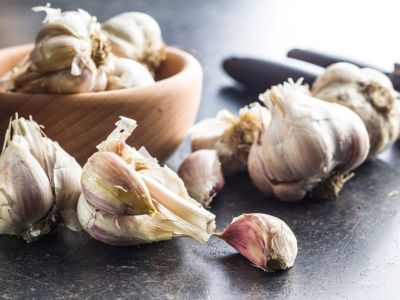So, if you’re wondering what to do with garlic, grab a clove and get ready for some info on historical advantages with improved health.
Is Garlic Good for You?
There are many proven and unsubstantiated health benefits derived from garlic. Evidence of garlic use goes back 6,000 years in the ancient Egyptian era. It has featured prominently in many other classic civilizations and continues to be used in most global cuisine. Is garlic good for you? There are many garlic supplements touting various health benefits which may be of assistance for various ailments. According to Hippocrates, the father of Western medicine, garlic was used to treat respiratory illness, stomach ailments, parasites, and fatigue. Early Olympic athletes used garlic as a sort of “performance-enhancing” supplement. Many people have believed the bulb can amp up the immune system, leading to it becoming a cold remedy. The science behind all this is a bit muddy, but it is still a popular supplement for a variety of health advantages. Studies have shown it to have the potential to reduce cholesterol and prevent clots from forming. So, while not all the benefits of garlic have medical science behind them, it is delicious and a little bit probably can’t hurt and may do a great deal of good.
How to Use Garlic
Garlic contains allicin, the chemical responsible for many well-being claims. To release its goodness, you need to use it raw, as cooking destroys the beneficial chemical. Simply adding it raw and consuming it in your meals can help harness the advantages, but some people find gastro upset an unfortunate side effect. Among the many garlic uses are in salad dressings, soups, stews, marinades, and much more. You can also find garlic supplements in pill form or liquid. As with anything, you should check with your doctor and make sure it is safe to take. There have been reports that the bulb can interfere with anticoagulant medicines.
What to Do with Garlic
Ancient Chinese medicine recommended a tonic made from garlic. You can purchase something similar under the name Fire Cider, but it is very easy to make at home. The basic recipe includes several peeled and crushed cloves with apple cider vinegar or rice vinegar poured over them. Let the concoction steep for a few days before use. You can also add ginger, horseradish, onions, cayenne, and anything else that will make it more palatable. Some users even add honey. Store in glass jars in a cool, dark location and break it out when flu and cold season arrives.
